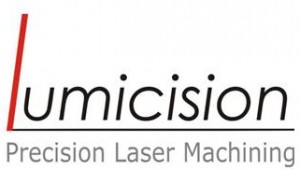 High power lasers
High power lasers
Definition: Lasers that generate high-power optical radiation.
High-power lasers required for specific applications:
Materials processing (laser welding, laser cutting, laser drilling, laser soldering, laser improving surfaces and engraving)
Large-sized laser displays
Remote sensors (such as LIDAR)
Medical applications (such as surgery)
Military applications (anti-missile weapons)
Basic Science (Particle Accelerator)
Nuclear fusion with lasers (such as the NIF project)
The processing of materials with high-power lasers after communications is the second largest portion of laser applications in the world.
Currently, there is no definite definition accepted as high power; in the laser processing of materials, this usually means several kilowatts or at least several hundredths, while in the case of multi-ten-watt laser screens, it is considered as high power. . In some areas, the label refers to producing a higher output power than other lasers with the same technology. For example, some high-power indicator lasers shine a few hundred milliwatts, while typical marker lasers are at several milliwatts.
There are other aspects of pulsed lasers. For example, Peak Power can be as important for Q-switched lasers as the average output power is important. Due to the pulse repetition rate and pulse width, peak power may be too high for a medium-power output laser. Usually a high-power laser is expected to have a high average power, not just high peak power peaks.
Technical challenges
The production of high optical power in a laser comes with a series of challenges:
The need for one or more tailpipe sources is very strong. While the Lamb’s tail is the only blowing method possible for most solid-state lasers, the blow with high power diode lasers (diode lasers or diode stokes) is increasing extensively. Diode blowjet lasers provide the highest output power in continuous wave mode. For very high pulse energies (tens of july), the LAMP tail is still more practical.
At least for continuous wave mode with high time operation, high efficiency is an important factor. Unfortunately, various technical challenges (such as thermal effects) make it difficult to access good efficiency at very high power levels.
Even in medium-active media with a moderate yield, a large proportion of the blowing power is converted to heat that has destructive side effects. In the worst case, thermal induction stresses lead to laser crystal failure. Solid state lasers also have a strong thermal lens mode that makes it harder to get high-quality radiation. In lasers with polarized output, casualties usually endangers efficiency. Therefore, effective heat output and heat management are very important issues that are necessary to deal with different types of thermal effects.
In Q-switched lasers, particularly high optical intensities are created, which can lead to optical laser injuries (such as laser mirrors). Even if light intensities are below the threshold of the destruction of all the light elements, fine dust particles can stimulate the phenomenon of degradation. Therefore, it is necessary to keep the laser layout very clean. This can be done by working in closed containers in clean rooms. In addition, in some cases it may be necessary to use precision optical components with a high optical degradation threshold.
Different types of nonlinear effects, especially in high-power fiber lasers, may be observed. Such as Raman dispersion, beryllium dispersion and four-wave mixing.
Laser impediments with large effective mediums usually have a high sensitivity to nausea and vibration of optical components. Therefore, the function of stripping, without repair, and the steady-state of spot radiation is one of the challenges that must be met.
Various types of lasers
There are several types of high-power lasers:
The high-power diodes shown above are high-power diodes for solid state lasers. These resources are capable of generating several kilowatts of low-power output, of course. For some applications where radiation quality is not important, direct use of high-power laser diodes is a good option. These applications include welding, soldering and coating and surface heat treatment. These lasers are straightforward, coherent, economical, and energy-efficient.
There are several types of bullet-proof lasers and solid-state diodes. Bar lasers can be optimized for several kilowatts of output, but achievable diffraction-limited radiation is only possible for a few hundred watts (with definite effects). Planar lasers (panels) can be expanded for tens of kilowatts or more with relatively high radiation quality. Thin laser discs can easily produce hundreds of watts of diffraction-restricted radiation, and can reach even levels above 10 kilowatts. The power output is usually moderate and good.
High-power fiber lasers and amplifiers can produce up to a few kilowatts of power and have high-power and high-power radiation-limited rays. Routine quality requirements can even be achieved with high power. Strictly, such fiber devices are not usually lasers, but MOPA or the amplifier are the main oscillator power.
Some gas lasers like CO2 and eximer lasers are suitable for outputs of hundreds to thousands of watts. These lasers typically work in a different region than solid state lasers, for example in the ultraviolet range or medium infrared.
Chemical lasers have a power output of several kilowatts or even megawatts
